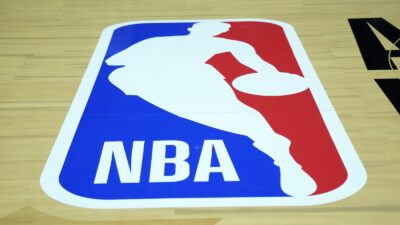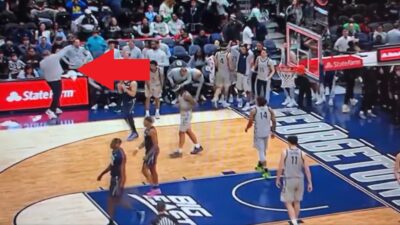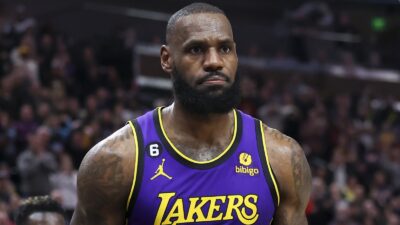
Four days and two rounds are in the books, and the NCAA Tournament has left us with more questions than jaw-dropping moments.
The second round, especially Sunday, provided more close games, but not much outside the expected. The top seeds have survived to meet next week, making the next games we’ll see some of the best we could have asked for.
The top teams in the nation have stepped into the Sweet Sixteen. Sunday’s action can help us sort out what to expect in the second week. Here are eight takeaways from the second slate of second-round games:
1. Duke’s flaws exposed in narrow win
Anyone thinking Duke would strut to the Final Four untouched was proven wrong on the first weekend of tournament play, as UCF came within millimeters of upsetting the Blue Devils on Sunday. In the game’s final minute, Zion Williamson converted a tough basket, RJ Barrett took the lead with a putback, and UCF’s two attempts to win the game both danced on the rim before falling back to Earth.
For UCF, it was a brutal missed opportunity. Senior center and giant human being Tacko Fall picked up his fifth foul on Williamson’s crucial late bucket. He was then not there to grab a game-sealing rebound nor help putback a game-winning bucket on the final possession.
For Duke, on the other hand, the game showcased the Blue Devils flaws. UCF focused its defensive efforts on Williamson, who still willed his way to 32 points. RJ Barrett, meanwhile, shot 6 for 15 from the field, struggling to find shots he could convert. Duke’s supporting cast was non-existent. Coach K only played seven players on the day, with just three points coming off the bench. UCF allowed Fall to essentially play a one-man zone defense, allowing poor shooters like Tre Jones and Justin Goldwire any shot they wanted. Jones hit just one of eight deep balls.
Any team facing saw a potential blueprint. Sell out to stop Williamson, with an eye on Barrett and Cam Reddish, but dare the other Blue Devils to score. If they don’t, Duke is very beatable.
2. The bracket sticks with mostly chalk
After two rounds of tournament play, we have not seen many surprises. Cinderella barely showed up for this year’s Big Dance.
The Sweet Sixteen includes 15 schools from power conferences, with top-seeded Gonzaga being the only “mid-major” moving on. That number counts Houston, out of the American Athletic Conference, as a power conference team, which is debatable. And yet, a school that has 5 Final Fours, a 3-seed this year and 44,000 students on campus isn’t quite the Cinderella darling we expect every March either.
All four of the Nos. 1, 2, and 3 seeds advanced this weekend and two of the No. 4 seeds joined them. The only double-digit seed to advance is Pac-12 Tournament champion Oregon.
This March marks the only time other than 2009 that all of the top twelve teams advanced to the Sweet Sixteen since the tournament expanded to its current format in 1985.
3. Tennessee almost let Iowa steal one
The first game of the day ended up being a great one, despite Tennessee jumping out to a 25-point first half lead. The Vols began to turn the ball over and went cold shooting the ball. Iowa took advantage, coming all the way back to force overtime.
The game will be best remembered for a late coaching decision by Rick Barnes. Admiral Schofield, who was hot early, dumping in 17 first half points, developed foul trouble late in the game. Barnes was deathly cautious with Schofield’s late game playing time. The Vols kept their leading scorer on the bench through most of crunch time, including their final offensive possessions, in a tie game with a chance to end the game in regulation.
Schofield then began overtime on the bench, staying there for the entire five minute extra period. Postgame, Barnes defended the decision by pinning it on Schofield. According to Barnes, Schofield urged him to stick with the lineup that was on the floor stretching the lead. There’s something to be said for a coach who listens to his players, and in this case, it worked. On the other hand, Rick Barnes is paid millions of dollars to coach the Volunteers. If that means making a choice that one of his players doesn’t agree with, so be it.
Against Purdue in the next round or another contender down the road in this tournament, this kind of head-scratching decision could send the Vols back to Knoxville.
4. Top of the ACC shows its might
All five of the top teams in the ACC have advanced to the Sweet 16, the most of any conference. That was expected of the three teams from the conference that were awarded top seeds. North Carolina and Virginia both coasted relatively unharmed through the first weekend. Both trailed at the half in the first round before coasting through their next 60 strong minutes of basketball.
Duke faced the toughest test of any ACC club, barely sneaking past UCF. Even though the Blue Devils were one last-second bucket away from heading home early, they are still the favorites to cut down the nets at season’s end.
The other two ACC teams advancing have been among the most impressive in the tournament. Florida State held off a tough challenge from Vermont and routed a Murray State team that was clicking late in the season. Virginia Tech looked strong in two wins this weekend, with Justin Robinson back healthy in the lineup providing senior leadership and a scoring pop. These two 4 seeds will now have a crack at Gonzaga and Duke to earn a bid to the Elite Eight.
5. Texas Tech reminds the world how good it can be
Buffalo earned a lot of praise as a team that could defend at an elite level. In the Bulls’ second-round game, they saw what elite defense really looks like. Chris Beard has his Texas Tech team playing as well on the defensive end of the floor as any team in college basketball.
On Sunday, Buffalo’s high-speed offensive attack was absolutely smothered by the Red Raiders. The Bulls managed to record just three more made field goals than turnovers. Every trip down the floor was a slog against the activity of Tech’s defense. At one point, the Red Raiders went on a 27-3 run, leaving Buffalo with no answers.
6. Oregon is on a marvelous March run
The Ducks are pulling off something rarely seen in college basketball. When Bol Bol went down with an injury, many lost hope for this Oregon team. Even later in the year, things looked dire. On February 23, Oregon lost to UCLA, for the second time this season, to fall to 15-12 on the year.
Since then, the Ducks haven’t lost. Oregon has now won ten straight games and looks like a completely new team. Perhaps it took time to figure things out after Bol’s injury. Maybe a team full of transfers and young player needed time to mesh.
Whatever has changed, it’s turned the Ducks into an entirely different team. Nothing about the Ducks that beat Wisconsin and UC Irvine looked like the Oregon team that struggled in Pac-12 play or lost to Texas Southern at home early in the year. Dana Altman has a talented team, with high-level recruits on the roster, and he is among the sharpest offensive coaches in America. These Ducks are not your usual 12 seed.
7. Virginia has exorcised its demons
The Cavaliers have a long way to go before Tony Bennett, his players, and their fans are pleased with this season, but after the way Virginia ended its season last year, a strong first weekend was an absolute must. Though Virginia started slow and trailed at the half versus Gardner-Webb, this weekend has been an unequivocal success for the Hoos.
Virginia played its way and earned two hard-fought, but relatively easy victories. The Cavaliers opponents struggled to crack the Pack Line defense, hoisting up a host of bad shots. Even when Virginia also went cold for stretches, Bennett’s club consistently manufactured stops on the defensive end to control the game.
8. Tons of NBA Draft talent remains
For those of you just watching college basketball to scout NBA prospects, you will not be disappointed next weekend. Although we lost draft nerd favorites like Ja Morant and Matisse Thybulle, there are still dozens of players moving up and down draft boards in this tournament.
Duke’s trio of Zion Williamson, RJ Barrett, and Cam Reddish catch most of the attention, but their teammate Tre Jones could work his way towards the middle of the first round with a strong tournament. Duke will face Virginia Tech sophomore Nickeil Alexander-Walker, who is considered by many to be a late-lottery talent. Alexander-Walker, the cousin of Los Angeles Clipper Shai Gilgeous-Alexander, is a rangy guard with a nice jump shot and excellent court vision.
Gonzaga’s frontline of Rui Hachimura and Brandon Clarke are both sure-fire first rounders with a chance to rise. Florida State’s Mfiodnu Kabengele is starting to receive some looks as a first-round selection and can improve his stock next weekend. Texas Tech’s Jarrett Culver is a lottery-pick with a chance to slide as high as the top five. The same is true of Virginia’s De’Andre Hunter.
The most eyes may be on Kentucky’s PJ Washington, who has not played yet in the tournament with a foot injury. He, along with teammate Keldon Johnson, are worthy of a lottery choice, and will have a chance to prove that this month.
Shane McNichol covers college basketball and the NBA for Larry Brown Sports. He also blogs about basketball at Palestra Back and has contributed to Rush The Court, ESPN.com, and USA Today Sports Weekly. Follow him on Twitter @OnTheShaneTrain.













